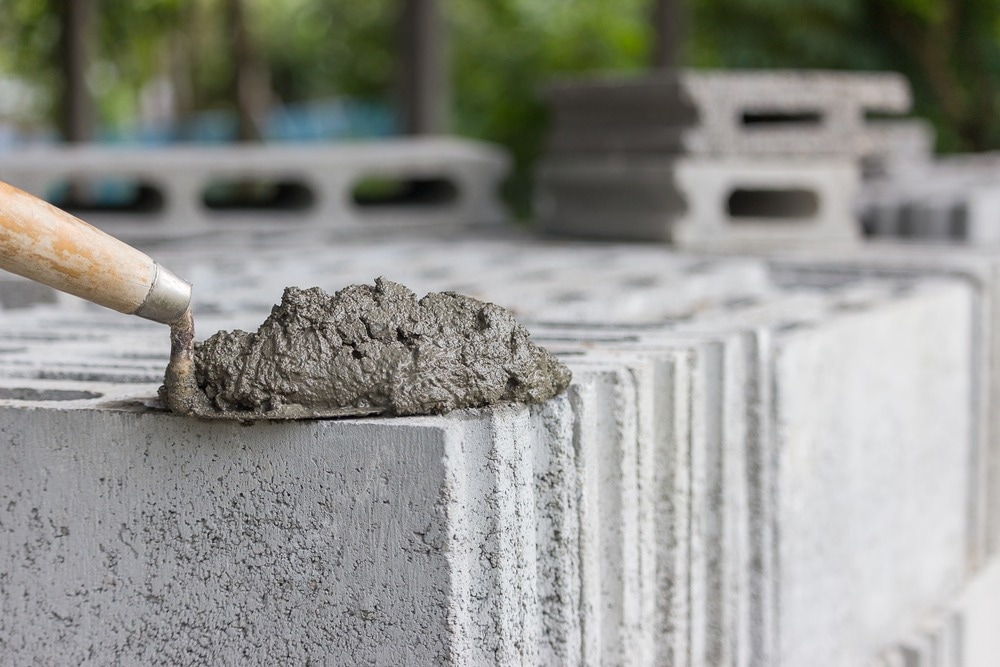Writing in the journal Construction and Building Materials, a team of scientists from China, the USA, and the UK have proposed a novel approach to creating smart cement.

Study: Graphene coated sand for smart cement composites. Image Credit: Okaycm'Stocker/Shutterstock.com
What are Smart Cementitious Composites?
Cementitious composites have been used for centuries in the civil engineering industry. Whilst adequate mechanical and physical properties such as durability are a central requirement of these materials, in recent years there has been increasing research interest in imbuing them with functional properties.
This has led to the field of smart cementitious composites. Amongst the various functionalities required by civil engineers, electrically conductive properties have several benefits, such as building health monitoring, electromagnetic shielding, and de-icing capabilities. Smart cementitious composites can improve the resilience, safety, and lifetime performance of structures. This decreases maintenance costs and improves the carbon footprint of new structures.
Several materials have been investigated for their use as electrically-conductive additives for smart cementitious composites. These include carbon black, carbon nanotubes, carbon fibers, and graphene. Direct incorporation into the cementitious matrix has been the commonly used approach in these studies.
Incorporating these materials directly into cementitious matrixes has the effect of decreasing electrical resistivity. Studies have reported improvements by several orders of magnitude, but there is a critical problem with this approach. These improvements come at the cost of the composite’s mechanical strength. Furthermore, processes are costly, energy-intensive, and time-consuming.
Achieving satisfactory electrical conductivity also requires large proportions of these materials. Direct admixing in these concentrations causes increased viscosity and reduced workability of the final mixture. This can impact properties such as durability and strength in final hardened composites. A new strategy is therefore needed to realize the potential of smart cementitious composites.
The Study
This study has proposed a new strategy which can potentially overcome the issues with conventional admixing processes. Achieving a low-cost method that maintains the mechanical and physical properties of cementitious materials and improves their electrical conductivity is a key concern in this field of materials science.
The novel approach developed in the paper involves using fine aggregates which are coated with conductive graphene-based materials. Firstly, a uniform coating of graphene oxide was applied to sand and then annealed at 300 oC. The annealing process reduced graphene oxide to reduced graphene oxide. Microwave treatments were then employed to further reduce the coating to graphene.
The wettability and conductivity of graphene, graphene oxide, and reduced graphene oxide were evaluated by the researchers. Results of this analysis informed the optimization of the process. Additionally, coating efficiency and the nanomaterial’s effects on the aggregate particles physical properties were assessed.
Mechanical strength, flowability, microstructure and water sorption of the prepared cementitious mortars were analyzed and assessed by the authors. Finally, the prepared composite mortar’s piezoresisivity and electrical resistivity were evaluated.
Results of the Study
The results of the study demonstrated that the novel approach could produce cementitious composite mortars with adequate electrical properties without a negative effect on the mechanical and physical properties of the final product. Coating the sand particles rather than directly incorporating nanomaterials into the mortar provides significant benefits for producing smart cementitious composites.
The novel approach set forth in the study imbues the cementitious mortar with enhanced self-sensing abilities as well as reduced electrical resistivity. Additionally, slightly improved flowability was observed, which addresses issues with mortar viscosity faced by conventional preparation processes. Moreover, there was no notable reduction in water absorption or mechanical strength.
SEM analysis revealed an approximately 62% coverage of sand particle surfaces by graphene. The average thickness of the coating was around 8.8%. Compressive testing also confirmed that the coating developed in the study gives the mortar dependable piezoelectric responses to compressive loading.
The nano-coating approach does not rely on binder chemistry. This means that it can be implemented universally, across different cementitious composites with conventional or non-conventional binder materials.
In Summary
In summary, the study has demonstrated an approach which improves upon conventional methods of preparing smart cementitious composites. A simple and efficient process, the author’s method can be easily applied to industrial scale operations, which has significant benefits for the construction and civil engineering industries.
The authors have presented a promising strategy for improving cementitious mortars and imparting advanced functionalities such as electrical conductivity and self-sensing abilities. However, some challenges still need to be overcome before this process can be considered for commercial applications. Further research on optimizing coating efficiency and quality needs to be performed in future studies.
More from AZoM: What is Glow Discharge Optical Emission Spectrometry?
Further Reading
Lu, D et al. (2022) Graphene coated sand for smart cement composites Construction and Building Materials 346(5) 128313 [online] sciencedirect.com. Available at: https://doi.org/10.1016/j.conbuildmat.2022.128313
Disclaimer: The views expressed here are those of the author expressed in their private capacity and do not necessarily represent the views of AZoM.com Limited T/A AZoNetwork the owner and operator of this website. This disclaimer forms part of the Terms and conditions of use of this website.